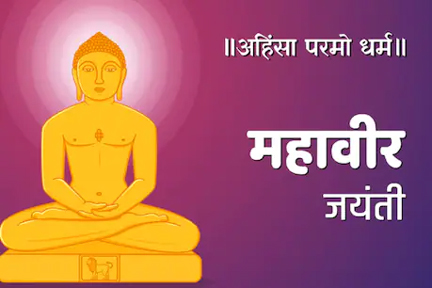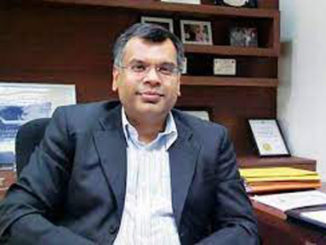
Mahavir Jayanti is one of the most significant festivals among the Jain community and is celebrated with splendour in India and across the world. The festival commemorates the birth of Lord Mahavira. As per Jain mythology, Lord Mahavira is the 24th Tirthankara of Jainism. In 2021, Mahavir Jayanti will be celebrated on the 25th of April.
History
As per Jain texts and religious scripts, Lord Mahavira took birth on the 13th day of waxing moon on the Chaitra month (Hindu calendar) in Kundalagrama (now Kundalpur) in Bihar, a few kilometres from Patna. That time, Vaishali was considered to be the capital of the state. However, the year of Mahavira’s birth is disputed. As per Swetambar Jains, Mahavira was born in 599 BC while the Digambar Jains consider 615 BC as his birth year. He was named as Vardhaman by his parents – King Siddhartha and Queen Trisala.
As per Swetambar community’s beliefs, Mahavira’s mother had 14 dreams, which were later interpreted by astrologers all of whom said that Mahavira would either go on to become an emperor or a sage (Tirthankara). When Mahavira reached 30, he left his throne and family in search of truth. He lived in exile for 12 years as an ascetic. During this time, he preached non-violence treated all everyone with reverence. He got his name “Mahavira” after showing exceptional skills in controlling the senses. It is widely belied that when Mahavira was 72, he attained enlightenment (Nirvana).
Festivities
The Jain community takes part in several festivities, which permit them to pledge with families and friends. Lord Mahavir is respected and worshipped by this community. The demonstration of an idol of Lord Mahavir is the most important festivity of the festival. The effigy of Mahavir is washed by the people with fragranced oil and this will denote the purity of the Lord.
Devotees across India and the globe will visit Jain temples in the country. Antique ancient spots, which are connected to the community of Jainism, are visited by people. One of the renowned destinations to visit during the festival is Gomateshwara. It is quite interesting to notice that many Jains bestow money or food to temples. The festivities will remain the same.
Public Life
In India, Mahavir Jayanti is a gazetted holiday. State, local and national level government workplaces will remain closed. The shops and commercial outlets owned by the community of Jains will also remain closed. If not, they may have shortened functioning hours.
The festival is celebrated to champion the cause of peace and harmony, and also spread the teachings of Lord Mahavira. A procession is carried out in the form of “rath yatra” with Lord Mahavira’s idol neatly placed on the top. Jain temples are decorated with flags while the Jains offer food and clothes to the needy. Jainism vehemently opposes animal slaughter and hence donations are made to stop animal killings.
Other than charitable acts, prayers are offered in temples dedicated to Lord Mahavira. Some other devotes often engage in meditation—a practice championed by Mahavira. Old and famous Jain temples witness a huge surge in devotees on this day. Teachings of Mahavira and Jainism are recited by monks and nuns.
Mahavir Jayanti is predominantly a Jain festival and to get the true essence of it, you can visit any of the Jain temples.
Spiritual destinations
Consider the following Indian destinations to visit during this festival:
– Madhuban: Madhuban, sited in Jharkhand, is the divinest destination for Jains.
– Girnarji: Girnarji is a place located in the Indian state of Gujarat.
– Gomateshwara: Gomateshwara is the most attractive destination in Karnataka to visit during this festival every year.
– Mangi Tungi: Mungi Tungi is another renowned Indian place of adoration for Jains in Maharashtra.
– Gajpantha: This is also the best place in Maharashtra. It has a beautiful temple. Devotees have to climb not less than 460 steps to reach.
Teachings
Belief in Soul and Karma
According to Mahavira every element was a combination of material and spiritual factors. While the material factor is perishable, the spiritual factor is external and consistently evolving itself. He held that the soul was held in a state of bondage due to karma.
The soul can be released from the bondage by getting rid of passions. He believed that the soul could be finally liberated only by the disintegration of Karmik force. According to him with the decay of the karmas the intrinsic value of the soul can be highlighted and the soul shines in full luminosity. When the soul attains infinite greatness it becomes Paramatma, the pure soul, with infinite knowledge, power and bliss.
Nirvana
The chief object of life according to Mahavira is to attain salvation. He therefore insisted on avoiding evil Karmas, prevent all kinds of fresh Karmas and destroy the existing ones. According to him this could be attained through five vows viz., non-injury (Ahimsa), speaking truth (Satya), non-stealing (Asteya), non-adultery (Brahmacharya) and non-possession (aparigraha).
In addition to taking these five vows he also insisted on principles of right conduct, right faith and right knowledge. Right conduct implied a dispassionate attitude towards senses. He said that we must treat the sufferings and happiness on equal planks.
Right faith meant belief in the Jinas and right knowledge meant the knowledge of the eventual liberation. The above vows and principles were meant for the householders. The Monks etc. had to follow a more severe code.
Non-belief in God
Mahavira did not believe in God nor did he believe that he created the world or exercised any personal control over it. According to him the world never comes to an end. No matter ends, it simply changes its form. Since the universe is also composed of certain matters it simply changes its form. We clearly find the influence of the Sankhya philosophy as far as this principle is concerned.
Mahavira further believed that the emancipation of man does not depend on the mercy of any outside authority. The man was the maker of his own destiny. While leading a life of austerity and self-mortification man can get rid of his miseries and sorrows. According to Mahavira the best way to attain salvation is through renunciation.
Rejection of Vedas
Jainism also rejected the theory of the Vedas and attached no importance to the sacrificial rituals of the Brahmans.
Ahimsa
Mahavira laid too much importance on Ahimsa. According to him all creatures, animals, plants, stones, rocks etc. possess life and one should not do any harm to the other in speech, deed or action. Though this principle was not entirely a new one, credit goes to the Jains that they popularized it and thereby put an end to the practice of various types of sacrifices.
Freedom to women
Mahavira favoured the freedom of women and believed that they also had the right to attain Nirvana. In this respect Mahavira followed the example of his predecessor, Parsva Nath. Women were allowed in the Jain Sangha and many women became Sarmini and Sravikas.
It will be evident from the above teachings of Mahavira that he was more of a reformer of the existing religion rather than the founder of a new faith.





Be the first to comment